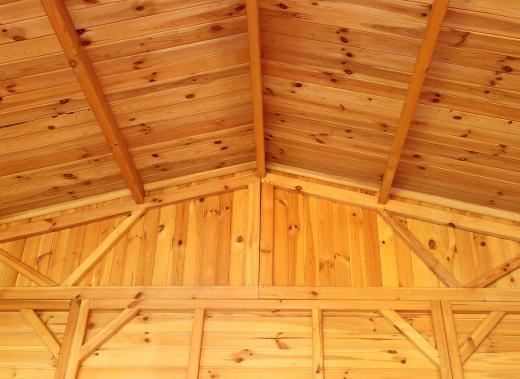An angle clip is a hardware device used to join two or more structural components within a building, bridge, or other object. This device is made from steel plates that are bent at 90-degrees to form an L-shape. The terms "angle clip" and "clip angle" are often used interchangeably to refer to this type of hardware.
Depending on the application, builders may choose an angle clip made from cold-rolled or galvanized steel. Cold-rolled clips can be used in most indoor applications, but are subject to rust if used outdoors. Galvanized angle clips feature a zinc coating that increases resistance to rust and corrosion. This makes galvanized units the more durable choice for outdoor use, or any object that may be exposed to corrosive chemicals.

An angle clip also features pre-drilled holes to accommodate screws or bolts. These holes may be staggered on each "wing" of the clip so that angle clips can be installed on both sides of an object. Staggered holes also prevent weak spots, particularly in wood. By staggering the holes, an angle clip can be used in close proximity to another unit with minimal risk that the wood will split.
This type of connector can be used to connect any two objects at a 90-degree angle to one another. They are frequently used to support roof or ceiling beams where they connect to building columns or walls. They are also used to connect these same walls or columns to the floor framing. Smaller clips may also be used to support shelving in cabinets, or shelves hung on the wall of the home. Some windows and doors are fastened to the surrounding wall structure using a form of angle clip.
Installers must choose the size of angle clips carefully to ensure adequate load support. Both the length of the clip and the width of each wing can affect its strength and load-bearing capabilities. It is also critical to choose a clip that's thick enough to support the load without breaking or bending. Fasteners should be matched to the type of clip chosen, and must be sized correctly to fit the clip and secure it to the structure.
When two objects meet at an angle other than 90-degrees, special angle clips can be used in place of standard L-shaped models. The angle of the clip should be matched to the angle between the objects. In wood framing, angle clips of all shapes and sizes are often left exposed to create a natural, rugged appearance.
